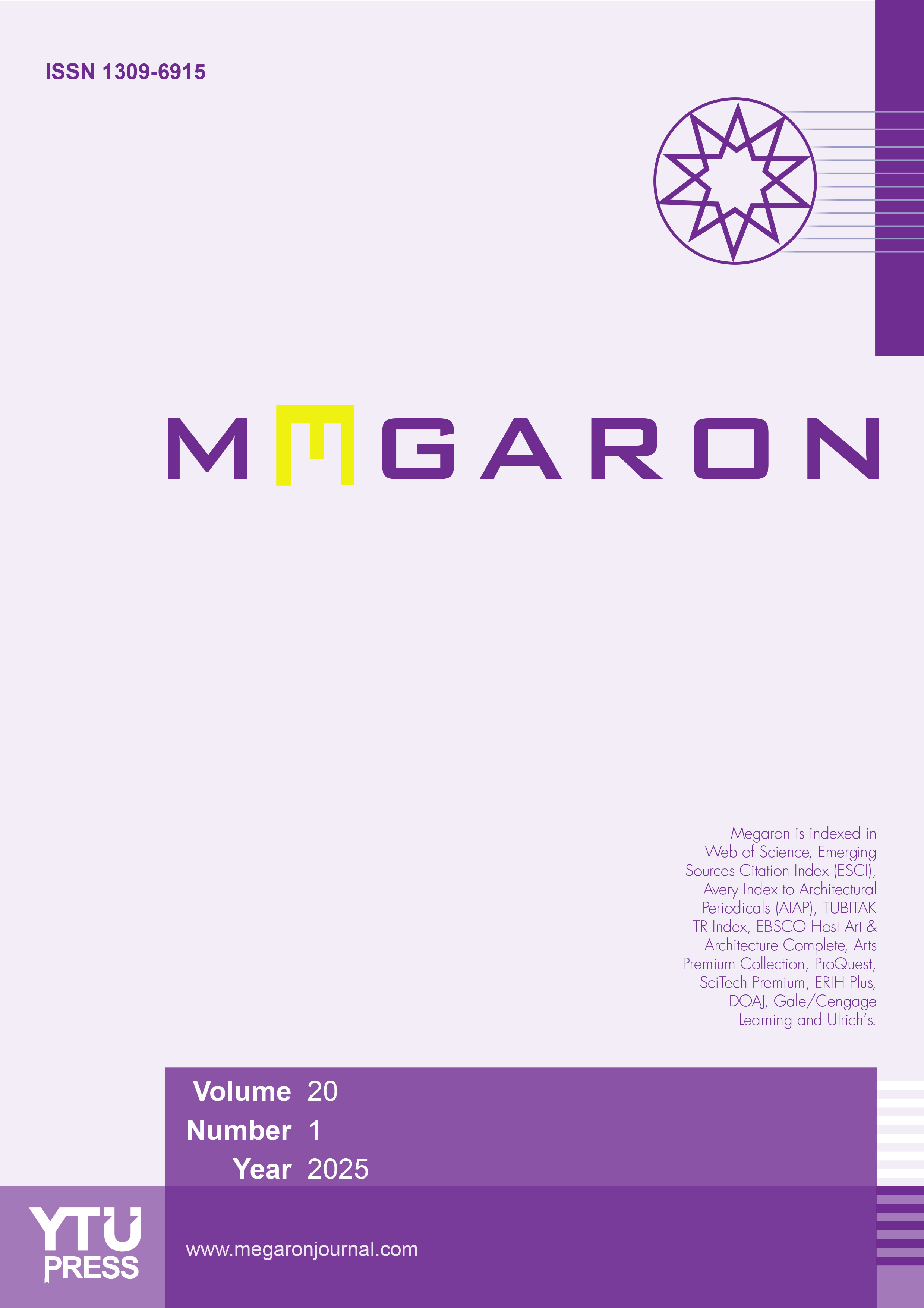Examining the effect of learning environment on student behaviour through comparison of face-to-face and online design studio
Ceren Doğan Dervişoğlu1, Ebru Yılmaz21Department of Architecture, Izmir Institute of Technology, Izmir, Türkiye, 100/2000 YÖK PhD Scholarship2Department of Architecture, Faculty of Architecture, Izmir Institute of Technology, Izmir, Türkiye
Covid-19 pandemic has affected the field of education, and transition to the distance learning has led to changes in the learning environment and pedagogical transformations. In this process, design studios, which are the basis of architectural education, were also maintained on online platforms. The aim of this study is to investigate the effect of the rapid learning environment change in the architectural design studio due to the Covid-19 pandemic on student behaviour. Examining students’ holistic perspectives and behaviours based on their experience in face-to-face design studios and online design studios, this research attempts to reveal the potential and challenges of face-to-face and online studios. In this study, students’ behavioural changes regarding face-to-face studio and online studio were measured using the survey method, and these two learning environments were interpreted over six themes (peer learning, socially mediated learning, self-efficacy, self-regulation, motivation, and communication with the instructor) by using the survey results, the course structure and the theoretical framework. The findings reveal that change in the learning environment affects student behaviour and that face-to-face design studios and online design studios have different potentials and limitations. In addition, the course structure of the face-to-face studio and online studio, the tools and methods used in learning, the way of communication and collaboration vary depending on the structure of the learning environment. This study reveals that the face-to-face design studio is a learning environment where the social structure of the studio is developed, peer learning is supported, and methods such as physical model and hand-sketching are used as well as digital tools during communication with the instructor. It shows that the most important potentials of the online studio are that it offers a flexible learning environment, does not have time and place restrictions, allows for cross-cultural and inter-institutional collaboration, and supports self-study. As a result, the research shows that online studio experiences gained during the pandemic period can offer the opportunity to create blended learning environments by adding online features to the traditional face-to-face studio.
Keywords: Design education, design studio; learning environment; student behaviour.Öğrenme Ortamının Öğrenci Davranışı Üzerindeki Etkisinin Yüz Yüze ve Online Tasarım Stüdyosu Karşılaştırması Yoluyla İncelenmesi
Ceren Doğan Dervişoğlu1, Ebru Yılmaz21İzmir Yüksek Teknoloji Enstitüsü, Mimarlık Ana Bilim Dalı, İzmir, 100/2000 YÖK Doktora Bursiyeri2İzmir Yüksek Teknoloji Enstitüsü, Mimarlık Fakültesi, Mimarlık Bölümü, İzmir
Covid-19 salgını eğitim alanını etkilemiş, uzaktan eğitime geçiş süreci öğrenme ortamı değişikliklerine ve pedagojik dönüşümlere yol açmıştır. Bu süreçte, mimarlık eğitiminin temeli olan tasarım stüdyoları da çevrimiçi platformlarda sürdürülmüştür. Bu çalışmanın amacı, Covid-19 pandemisi nedeniyle mimari tasarım stüdyosunda gerçekleşen ani ortam değişikliğinin öğrenci davranışına etkisini araştırmaktır. Öğrencilerin yüz yüze tasarım stüdyosu ve çevrimiçi tasarım stüdyosu deneyimlerine dayalı olarak bütünsel bakış açılarını ve davranışlarını inceleyen bu araştırma, yüz yüze stüdyo ve çevrimiçi stüdyonun potansiyellerini ve zorluklarını ortaya çıkarmaya çalışmaktadır. Bu çalışmada, anket yöntemi kullanılarak öğrencilerin yüz yüze stüdyo ve online stüdyo ile ilgili davranış değişiklikleri ölçülmüştür ve anket sonuçları, ders strüktürü ve kuramsal çerçeveden yararlanılarak bu iki öğrenme ortamı belirlenen altı tema (akran öğrenmesi, sosyal aracılı öğrenme, öz yeterlilik, öz düzenleme, motivasyon ve eğitmenle iletişim) üzerinden yorumlanmıştır. Bulgular, öğrenme ortamındaki değişikliğin öğrenci davranışını etkilediğini ve yüz yüze tasarım stüdyoları ve çevrimiçi tasarım stüdyolarının birbirinden farklı potansiyelleri ve sınırları olduğunu ortaya koymaktadır. Ayrıca yüz yüze stüdyo ve online stüdyonun ders yapısı, öğrenmede kullanılan araç ve yöntemler, iletişim ve işbirliği şekli öğrenme ortamının yapısına bağlı olarak değişmektedir. Bu çalışma, yüz yüze tasarım stüdyosunun, stüdyonun sosyal yapısının geliştirildiği, akran öğrenmesinin desteklendiği, eğitmenle iletişimde dijital araçların yanı sıra maket ve el çizimi gibi yöntemlerin de kullanıldığı bir öğrenme ortamı olduğunu ortaya koymaktadır. Çevrimiçi stüdyonun en önemli potansiyellerinin ise esnek bir öğrenme ortamı sunması, zaman ve yer kısıtlaması olmaması, kültürler arası ve kurumlar arası işbirliğine izin vermesi ve kendi kendine çalışmayı desteklemesi olduğunu göstermektedir. Sonuç olarak araştırma, pandemi döneminde kazanılan çevrimiçi stüdyo deneyimlerinin, geleneksel yüz yüze stüdyoya çevrimiçi özellikler ekleyerek harmanlanmış öğrenme ortamları oluşturma fırsatı sunabileceğini göstermektedir.
Anahtar Kelimeler: Tasarım eğitimi, tasarım stüdyosu, öğrenme ortamı, öğrenci davranışıManuscript Language: English








